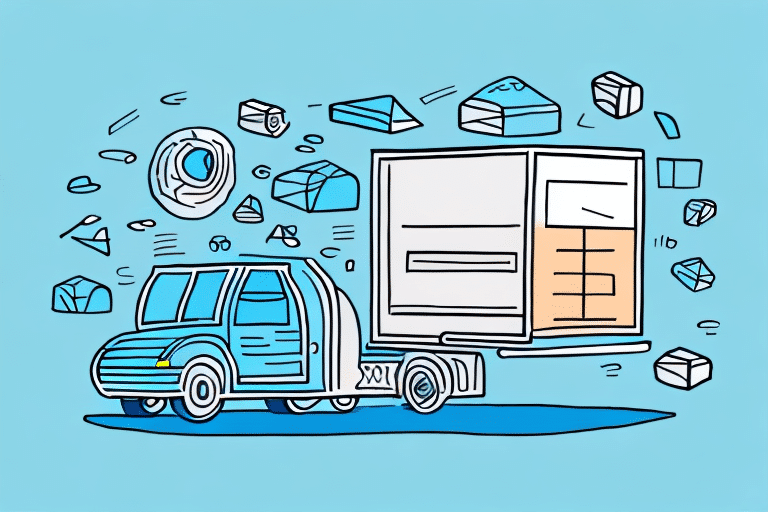Fast Shipping: Enhancing Customer Satisfaction and Driving E-commerce Growth
In the competitive landscape of ecommerce, where convenience and speed are paramount, fast shipping has emerged as a critical factor in ensuring customer satisfaction and fostering loyalty. This article explores the significance of fast shipping, its impact on customer retention and online sales, and effective strategies to implement a fast shipping approach in your ecommerce business.
Why Fast Shipping Matters in Ecommerce
Fast shipping is integral to meeting modern consumer expectations. With the proliferation of marketplaces like Amazon, which offer same-day and next-day delivery options, customers now anticipate swift and reliable shipping from all online retailers.
Moreover, expedited shipping can alleviate buyer anxiety and build trust. When customers are confident that their orders will arrive promptly, they are more inclined to complete purchases without hesitation. Conversely, slow or inconsistent shipping can lead to frustration, negative reviews, and lost sales.
Fast shipping also plays a pivotal role in enhancing customer loyalty. A positive shipping experience encourages repeat business, increasing the lifetime value of customers and strengthening the overall customer base.
The Impact of Fast Shipping on Customer Loyalty
Fast shipping is a significant driver of customer loyalty in ecommerce. A study by MetaPack revealed that 96% of customers are likely to repurchase from a retailer based solely on their shipping experience.
On the flip side, slow or unreliable shipping can push 90% of customers to switch to competitors, as highlighted by Convey. Ensuring fast and dependable shipping is thus essential for retaining customers and maintaining a competitive edge.
Additionally, swift deliveries contribute to higher customer satisfaction, leading to positive reviews and word-of-mouth referrals, which are invaluable for attracting new customers.
How Fast Shipping Affects Online Sales
Fast shipping has a direct correlation with increased online sales. According to Radial, 93% of customers are more likely to make repeat purchases from retailers that offer fast and free shipping options.
Furthermore, fast shipping can boost conversion rates. eMarketer reports that 45% of consumers have abandoned purchases due to slow delivery times. By offering expedited shipping, ecommerce businesses can minimize cart abandonment and enhance sales.
It's important to tailor shipping options to meet diverse customer expectations. For instance, expedited shipping may be more crucial for gift purchases, while other items may not require the same level of speed.
The Psychology Behind Fast Shipping and Customer Satisfaction
The concept of instant gratification plays a significant role in customer satisfaction. Fast shipping fulfills the desire for immediate possession of products, leading to a positive shopping experience.
Additionally, quick deliveries generate excitement and anticipation, fostering a stronger emotional connection to the brand. This positive reinforcement encourages repeat business and enhances customer loyalty.
Implementing Fast Shipping in Your Ecommerce Store
Adopting a fast shipping strategy involves several key steps:
- Selecting a Reliable Shipping Partner: Partner with established carriers such as FedEx, UPS, or USPS to ensure timely deliveries.
- Offering Transparent Shipping Options: Clearly communicate shipping costs and options, including free shipping thresholds to incentivize larger purchases.
- Optimizing Fulfillment Processes: Streamline order processing through automation and efficient inventory management to reduce delays.
Best Practices for Fast Shipping in Ecommerce
To effectively implement fast shipping, consider the following best practices:
- Clear Communication: Provide customers with regular updates, including tracking information and expected delivery dates.
- Efficient Order Processing: Aim to process and ship orders promptly. Utilize inventory management systems to enhance workflow efficiency.
- Data-Driven Optimization: Analyze shipping data to identify areas for improvement, such as carrier performance and regional delivery trends.
The Cost of Fast Shipping: Evaluating the Investment
While fast shipping may incur additional costs, the investment can yield substantial returns. Enhanced customer loyalty, increased sales, and higher average order values often offset the expenses associated with expedited shipping.
A Deloitte study indicates that free and fast shipping can lead to higher customer spending, as shoppers are more likely to add items to their cart to qualify for free shipping offers.
Measuring the Success of Your Fast Shipping Strategy
To assess the effectiveness of your fast shipping initiatives, monitor the following metrics:
- Delivery Times: Track the average time taken for packages to reach customers.
- Delivery Reliability: Measure the percentage of on-time deliveries.
- Cancellation Rates: Monitor order cancellations attributed to shipping delays or issues.
- Customer Satisfaction: Gather feedback through surveys and reviews to gauge satisfaction levels.
Future Trends and Innovations in Ecommerce Fulfillment and Shipping
The future of ecommerce shipping is poised to be shaped by several emerging trends:
- Automation and Robotics: Automation technologies can enhance the efficiency of fulfillment centers, reducing processing times.
- Drone Delivery: Drone technology is advancing, promising faster deliveries, especially in remote areas.
- Subscription-Based Delivery: Subscription models offer regular and reliable deliveries, catering to customers' ongoing needs.
Staying abreast of these trends will enable ecommerce businesses to continually improve their shipping strategies and meet evolving customer expectations.
Case Studies: Successful Fast Shipping Strategies in Action
Several ecommerce leaders exemplify successful fast shipping strategies:
- Amazon Prime: Offers free two-day shipping on millions of items, with options for same-day and next-day delivery in select areas.
- Zappos: Provides free standard shipping on all orders, with expedited shipping available for an additional fee.
- Nordstrom: Delivers free standard shipping on all orders, and offers two-day and next-day delivery options for a fee.
Addressing Challenges in Implementing Fast Shipping
While fast shipping offers numerous benefits, it also presents challenges:
- Cost Constraints: Expedited shipping can be expensive. Balancing cost with quality is essential to maintain profitability.
- Logistical Complexities: Ensuring efficient and quick deliveries requires sophisticated fulfillment processes and reliable partnerships.
- Regional Variations: Shipping rates and delivery times can vary widely by region, necessitating tailored shipping solutions.
Conclusion: Prioritizing Fast Shipping for Ecommerce Success
Fast shipping is no longer a luxury but a necessity in today's ecommerce environment. By prioritizing swift and reliable shipping, businesses can enhance customer satisfaction, foster loyalty, and drive significant growth in online sales. Implementing effective shipping strategies and staying informed about industry trends will ensure that your ecommerce business remains competitive and responsive to customer needs.








